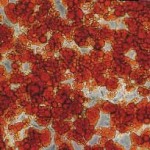Weekend Roundup, September 28, 2012
 As not everyone may have a chance during the week to read every post, here’s a roundup of last week’s posts:
As not everyone may have a chance during the week to read every post, here’s a roundup of last week’s posts:
- Does Canada Need a National “Stop to Smell the Flowers” Day?
- BC’s Northern Health Takes an Enlightened Position on Obesity
- A Northern Approach to Childhood Obesity?
- A Phased Approach to Obesity Management
- Milking Weight Loss?
Have a great Sunday! (or what is left of it)
AMS
Edmonton, Canada
Hindsight: Upregulation of Adipose Tissue Endocannabinoid System
In the mid-2000s, the development of the orally active CB-1 blocker rimonabant as an anti-obesity drug, prompted much work on this system.In 2005, we published a paper DIABETES, in which we reported peripheral activation of the endocannabinoid system in human obesity.
In this study, we measured circulating endocannabinoid concentrations and studied the expression of CB-1 and the main degrading enzyme, fatty acid amide hydrolase (FAAH), in adipose tissue of lean (n = 20) and obese (n = 20) women and after a 5% weight loss in a second group of women (n = 17).
We found that circulating levels of anandamide and 1/2-arachidonoylglycerol were increased by 35 and 52% in obese compared with lean women (P < 0.05).
We also noted that adipose tissue mRNA levels were reduced by 34% for CB-1 and by 59% for FAAH in obese subjects (P < 0.05).
In addition, we observed a strong negative linear correlation between FAAH expression in adipose tissue and circulating endocannabinoids. However, we also noted that circulating endocannabinoids and CB-1 or FAAH expression were not affected by 5% weight loss.
In differentiation assays, we fond that expression of CB-1 and FAAH increased in mature human adipocytes compared with preadipocytes. We also noted the expression of these components in other tissues.
Thus, we concluded that there is indeed a a peripheral endocannabinoid system (especially in adipose tissue) that is upregulated in human obesity.
Since rimonabant’s withdrawal from the market due to psychiatric side-effects and thus, cessation of the development programs of similar molecules by other companies, interest in the endocannabinoid system, at least in the context of obesity, has diminished.
However, our findings did suggest that this system is present and activitate in peripheral tissues in obese individuals – a topic that will likely continue to be of interest.
AMS
Edmonton, Alberta
A Phased Approach to Obesity Management
 The recent Position Statement on Obesity from BC’s Northern Health includes a recommendation for a phased approach to obesity management.
The recent Position Statement on Obesity from BC’s Northern Health includes a recommendation for a phased approach to obesity management.
These are:
Stage 1: Stabilize weight
Explore, identify and address the causal pathways for excess weight. The goal of this stage is to stop weight gain (stabilize weight), rather than reduce weight. Physicians may use tools such as the Canadian Obesity Network’s 5As of Obesity Management to approach patients to discuss their weight. Further, it is important to consider the drivers and consequences of excess weight.
Stage 2: Address excess weight
When weight has stabilized, address, if medically necessary, the excess weight to reduce health risks that are precipitated and exacerbated by the excess weight. For some, this may involve targeted goals and invasive procedures to balance energy intake and energy expenditure. To achieve long-term success in Stage 3, efforts in Stage 2 must be based on individual lifestyle changes. Specifically, these should not lead to a dieting mentality, but rather lifestyle changes supported by the development of eating competence and an increasingly active lifestyle.
Stage 3: Maintain weight loss
Long-term success in addressing health risks of excess weight requires permanent lifestyle changes. While these changes will not happen overnight, it will be necessary for permanent changes to occur in order for the individual to maintain their state of improved health and reduced risks.
The Position Statement also includes recommendations to use the Edmonton Obesity Staging System to determine the need and course of treatment as well as a statement to target best weight as a realistic goal.
The entire Position Statement is available here.
AMS
Edmonton, Alberta
Obesity study earns hefty praise
Sharma said health authorities are often resistant to change and fall victim to “group think”, but he said Northern Health was willing to take a chance by getting away from the concept of healthy weight and adopting the idea that people can be healthy at any size.
“This is the fastest I think I’ve ever seen emerging research find its way into a policy document,” Sharma said, noting some of the ideas in the paper come from research published in academic journals less than a year ago.
A Northern Approach to Childhood Obesity?
 Earlier this week I posted on the rather innovative and forward-thinking Position Statement on obesity prevention and management published by British Columbia’s Northern Health.
Earlier this week I posted on the rather innovative and forward-thinking Position Statement on obesity prevention and management published by British Columbia’s Northern Health.
The following passage from this document, here referring to approaches of dealing with childhood obesity illustrates just how different the recommendations and conclusions are from the current line of thinking in most constituencies:
“…Weight seems to dominate current initiatives directed at children and youth and the long-term impacts of a weight-focused approach must be considered against a health-focused approach. In a weight-focussed approach, there is potential to do more harm than good (e.g. long-term risk for developing disordered eating, impacts on body image and self-esteem). Moreover, normal weight children may also have unhealthy behaviours while obese children may have healthy behaviours. The Canadian Measurements Survey does not support that obese children are any less active than their normal weight counterparts [note, a recent statement of mine to this effect can be found here].
The surveillance and screening of children and youth in schools and other community settings can be problematic. While information collected may be shared with parents to motivate them to take action on their child’s lifestyle and/or seek support from the health care system as appropriate and/or motivate educators and communities to support healthy lifestyles, the benefits of this practice are not clear. Schools and communities may not have the necessary resources to support children identified as being at risk; they may not be adequately resourced for data collection, information dissemination, ort to help interpret or apply the data ( e.g., appropriate tehcniques and equipment, ehtical and sensitive communication). It is also unclear if this practice is effective for determining abnormal or normal growth.
Harms are also documented in screening settings such as schools. Harms may include the adoption of a dieting mentality, increased stigmatization of obesity, lowered self-esteem, increased body dissatisfaction and disordered eating. Health messaging to children, youth and their parents must focus on supporting optimal growth, development and health, rather than a weight based approach for the purpose of avoiding obesity.”
Just compare these careful statements (referenced in the original document) to the recent shock, shame, and blame approach taken in Atlanta– quite the contrast!
It may be too early to know which approach will reduce harm but I’d be happy to place my bets with the Northern approach.
I’d certainly like to hear from my readers if they are aware of similar statements from other jurisdictions and if they agree with this ‘soft-ball’ approach to childhood obesity.
AMS
Edmonton, Alberta



